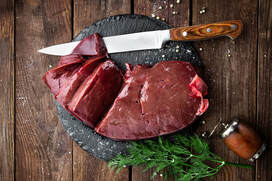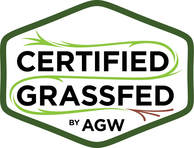 Sustainability These days I hear “Nose to Tail cooking” as a culinary trend and I’m happy about that! Nose-to-tail cooking is all about sustainability, and this is very important to us- and it should be for you too! See, a farmer can’t raise a pork chop. A farmer can’t raise a rib eye steak, or a leg of lamb. You have to raise a whole pig, a whole lamb, and a whole cow. It’s pretty simple: Tossing out valuable parts of the animal doesn’t make sense environmentally or economically. But what does “nose to tail” mean? It means eating and using all parts of the animal- its less popular steaks, roasts, organ meats, bones, even the tallow has (once again) become a popular fat to use for cooking. This is why by selling in bulk, we encourage sustainability, and a more economical way for our customers to get quality grass fed beef. Nose to Tail Around the World Using the whole animal is a practice that is still common in many countries around the world. We experience this firsthand in travels to Uruguay and Argentina- where they are so proud of their (grass fed) beef and will gladly talk to you for hours about where it comes from, the different cuts, how to cook it, and how to eat it. In Barcelona, we went to the famous market “La Boqueria” where they sell everything under the sun, including EVERY cut imaginable of meat. I admit seeing the lamb’s head for sale blew me away! However, aside from this ultra-foodie “nose- to tail eating” trend, it has largely slipped from the Western mindset. I think this is mainly due to the lack of connection we have from our food sources, embodied by the fact that meat has become industrialized and is now perfectly portioned into pink patties, shrink-wrapped in plastic and resembling in no way whatsoever any known animal. Unfortunately for us, in our finicky attitudes about food, we’ve been overlooking fine cuts of meat, tasty delicacies and, of course, the spice of life — variety! Honoring the Animal and Our Environment To maximize the nourishment you can receive from a living creature is to honor that it was, in fact, living. By not using the whole animal, we’re not respecting other living creatures. Giving thanks to the animal for supplying your meal is a good start, but it’s really when we choose to honor the whole animal that we take a step forward in mindful consumerism and changing our food supply system. In so doing, we encourage a mindset that fights excess waste and increases appreciation for the animals that nourish us. For Your Health A direct effect of eating the whole animal is- it’s good for your body. As I learned in my nutrition studies, Americans tend to promote certain cuts more than others (i.e. chicken breast, salmon, tenderloins, etc..) but the reality is, just like humans, animals store different nutrients in different parts of their bodies, and by eating the same cuts over and over, you are getting the same nutrients and neglecting to get other important ones. Our Own Experience A few years before starting our farm, we bought our first ¼ beef steer from our farming mentor, and now friend, Krusen Grass Farm in Wisconsin for our own beef consumption. I won’t lie, when Paul told me about trying it out, I hesitated. At that point, I knew nothing about “bulk buying”, how it works, how much beef I was going to get, and exactly what cuts. I was used to cooking with ground beef and the occasional steak Paul would throw on the grill, but beyond that, I knew nothing about a pot roast, a round steak, and slow cooking beef was a concept beyond my culinary repertoire. The experience of buying in bulk opened a new world of cooking and flavors for us! We had to do something with the cuts of beef I knew nothing about- so I’d look for a recipe, cook it up (way easier than I ever thought) and be surprised by how delicious and easy it was to cook all these different cuts!. We were very pleased by chuck steaks, and top butt steaks, rump roast, sirloin tip, round steaks, and even tried a couple of liver pate recipes that actually delighted us! This idea that by buying a ¼ of an animal, splitting the entire animal with others, gave us a good feeling that we were honoring the whole animal as well as helping the farmer go through its inventory. We encourage our customers to buy in bulk, but otherwise to try different cuts of beef. We are here to help with cooking instructions and/or recipe ideas! And stay tuned for next month when I will blog about “Nose to Tail How-To”.
0 Comments
 In the spirit of “new year, new you health resolutions”, I figured I’d talk about one of the healthiest products we have at our farm. Beef liver. Now hold on, don’t go… I know many of us didn’t grow up eating liver, and maybe you are disgusted by it (I was!), but I beg you to please stay with me and at least read the rest of this post. Health Benefits: While studying nutrition, I heard so much about the health benefits of beef liver- it was even sometimes called a “super food”! Interestingly, it was once a popular and treasured food source, but liver has fallen out of favor. This is unfortunate because liver is possibly one of the most nutrient-dense foods on the planet, and inexpensive too! It is rich in protein, low in calories, and packed with essential vitamins and minerals. People often look to fruits and vegetables for vitamins and minerals, but liver far surpasses them all in terms of nutrient content. A small amount of liver provides well over 100% of the RDI for many essential nutrients. Here are some nutrients found in a 3.5-ounce serving of beef liver:
How to Include Liver in Your Diet: I admit it, liver has a unique taste, which some people love, and others hate. I know it was tough for us to stomach it the first time we tried it, so I’ll give you that, BUT… here are some suggestions on how to include it in your diet and get these great nutrients:
Recipes to Try: While our recommended way to start eating liver is the "mince, freeze, and add to ground beef" method, here are a couple of good recipes if you want to try. This might be the best Liver and Onions Recipe we've found: http://ediblearia.com/2009/07/23/not-your-average-liver-and-onions/ Beef Liver Pate: https://autoimmunewellness.com/bacon-beef-liver-pate-with-rosemary-and-thyme/ P.S. Beef Heart has a much, much milder flavor than liver and has some of the same nutrients. It’s a lot like ground beef, but I would classify it as “sweeter.” Whereas you’d only add 1-2 cubes of liver to any dish, it’s pretty easy to add up to a quarter pound of heart to a pound of ground beef, even in grilled hamburgers! ***Both Beef Liver and Beef heart are FOR SALE on our web store- so give it a try and REALLY get healthy this new year!***  Grass-fed beef is much lower in fat than its corn fed counterpart. This may mean that your beef can dry up faster or become overcooked much quicker than corn fed. Without the added fat from corn, grass-fed beef tastes like... well, beef! but you want to know how to cook it properly. The name of the game is to keep the meat moist, an easy task when you consider the following tips:
Happy cooking and enjoy your beef! |
AuthorMarisa usually writes about nutrition, grass fed beef, organic agriculture, as well as sharing delicious recipes; Paul writes about farm work- sharing his stories and experiences, and most times... we both collaborate on the stories! Archives
March 2024
Categories
All
|
 RSS Feed
RSS Feed


